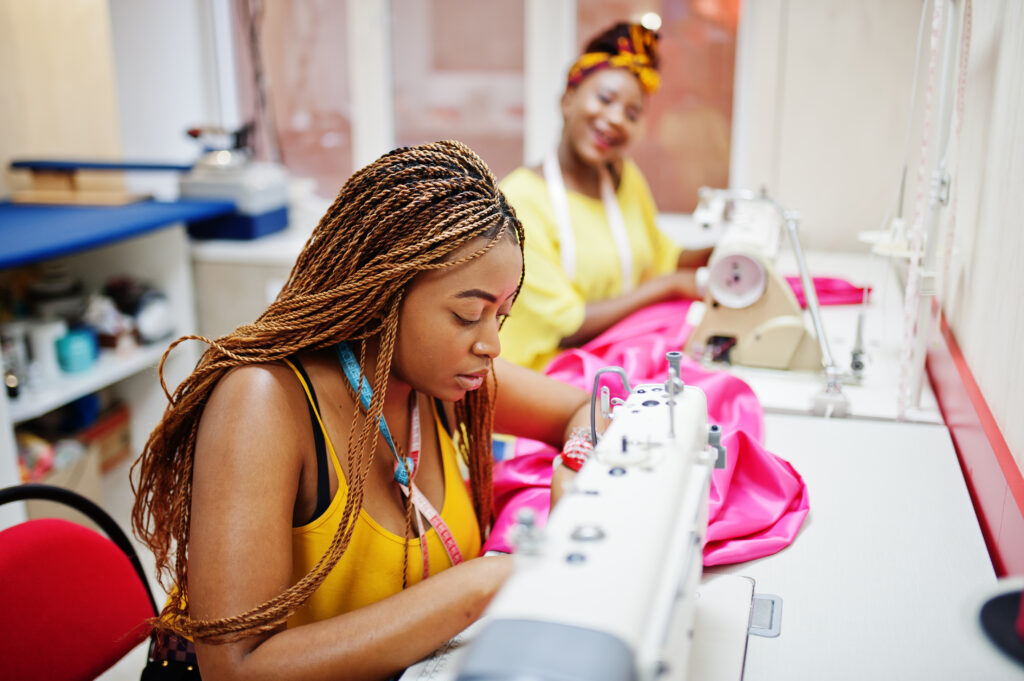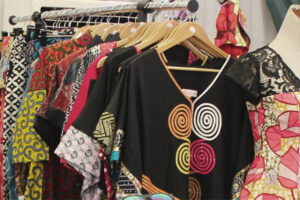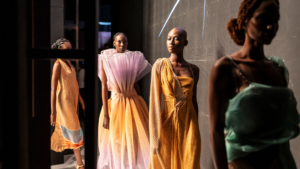
The Nigerian fashion industry is not just about clothing; it’s about economic empowerment, cultural preservation, and global recognition.
“The fashion industry in Nigeria has been revealed to be a thriving market, contributing approximately $6.1 billion to the country’s GDP.” said Barr Hannatu Musa Musawa, Minister of Art, Culture, and the Creative Economy, who highlighted this figure at the Creative Africa Nexus Weekend Summit, emphasizing the potential of the fashion sector to drive job creation, especially for youth and women, while fostering cultural pride and economic growth.
Blending rich textiles like Ankara and Adire with contemporary designs, Nigeria’s fashion industry has evolved into a cultural and economic powerhouse, significantly contributing to GDP growth, drawing in international investors, and providing jobs across various sectors. In this article, we take a closer look at how Nigeria’s fashion industry contributes to financial growth and economic development.
1. Contribution to GDP and Economic Diversification

Nigeria’s economy has historically been dominated by oil, but in recent years, the government and private sector have pushed for diversification into non-oil industries. The fashion industry, along with entertainment and technology, has emerged as one of the promising sectors supporting this shift. According to Nigeria’s National Bureau of Statistics (NBS), the creative sector, which includes fashion, contributes approximately 2% to the GDP and is projected to grow as the industry becomes more structured.
Fashion is part of Nigeria’s larger creative economy, which promotes diversification, reduces reliance on oil, and encourages sustainable growth. With its appeal to both domestic and international markets, fashion brings in additional revenue and fosters growth within complementary sectors like agriculture (for cotton and leather) and manufacturing.
2. Export Potential and Foreign Exchange Earnings

Nigerian designers and brands are gaining international recognition, with many showcasing at prestigious fashion weeks in London, New York, and Paris. Brands like Lisa Folawiyo, Orange Culture, and Maki Oh have earned global acclaim, contributing to the international demand for Nigerian fashion. As these brands enter international markets, Nigerian fashion generates foreign exchange revenue, helping to stabilize Nigeria’s currency. Exported garments and accessories also promote Nigerian culture globally, enhancing the country’s image and opening doors for other Nigerian exports.
With trade agreements that encourage African exports, like the African Growth and Opportunity Act (AGOA), Nigerian fashion businesses benefit from reduced tariffs when exporting to the United States, enhancing competitiveness in global markets.
3. Growth of Fashion SMEs and Startups

The Nigerian fashion industry has fuelled a surge in small and medium-sized enterprises (SMEs) as more designers, stylists, and entrepreneurs enter the market. These fashion SMEs contribute to tax revenues and stimulate local economies. As SMEs expand, they often partner with other local businesses (e.g., textile suppliers, logistics companies), creating a ripple effect of financial benefits within the community. Also, the rise of fashion-tech startups is also notable, with companies offering e-commerce platforms, digital fitting solutions, and mobile payment systems. These innovations make it easier for Nigerian brands to reach consumers both at home and abroad, fostering a culture of digital entrepreneurship.
4. The Influence of Fashion Events on Tourism and Hospitality

Major fashion events like Lagos Fashion Week and African Fashion Week Nigeria attract local and international visitors, creating opportunities in the tourism and hospitality industries. These events not only showcase Nigerian designers but also attract media attention and buyers from around the world, generating revenue for hotels, restaurants, and transportation providers. Lagos Fashion Week, for instance, is estimated to contribute millions of naira to Lagos’s economy annually. With designers, models, media, and fashion enthusiasts coming together, these events create a spike in demand for local services, thus boosting revenues in the tourism sector. Events also give Nigerian designers a platform to showcase their work to global audiences, which can lead to partnerships, collaborations, and sales that extend beyond the event itself.
Conclusion: Fashion as a Catalyst for Economic Transformation

The Nigerian fashion industry is not just about style; it’s a dynamic driver of economic growth and social development. Through job creation, export potential, SME growth, and financial inclusion, fashion is contributing to Nigeria’s vision of a diversified and resilient economy. As the global demand for African fashion continues to rise, Nigerian fashion is well-positioned to be a leading player in the creative economy, enriching the nation’s cultural heritage and fueling its economic ambitions.
